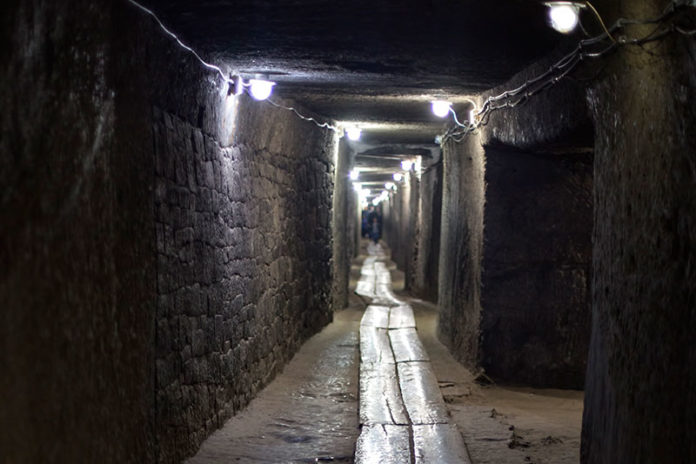Mexican drug smugglers are really getting bold. A cross-border tunnel recently discovered by U.S. authorities exits in a San Diego warehouse right next to a busy Customs and Border Protection (CBP) port of entry. It gets better. The southern California warehouse is manned by Illegal immigrants even though it is situated just a few hundred yards from a hectic border crossing staffed with federal agents around the clock.
A Mexican national with legal residency has been arrested and charged in connection to the operation, federal prosecutors announced this month. His name is Rogelio Flores Guzman and he helped construct the tunnel, which runs 2,000 feet from a Tijuana warehouse to the south San Diego depot. The U.S. has charged the 31-year-old with trafficking fentanyl, methamphetamine, heroin, cocaine and marijuana via a subterranean tunnel stretching from Mexico to a warehouse in Otay Mesa. When authorities entered the tunnel, they found around 575 packages of drugs worth nearly $30 million, according to a bulletin issued by the Department of Justice (DOJ). This sets a record because it marks the first time that five different types of drugs are found in a tunnel, according to the feds.
Agents from a special tunnel task force confiscated 394 packages containing 585 kilograms of cocaine; 133 packages containing 1,355 kilograms of marijuana; 40 packages containing 39.12 kilograms of methamphetamine; Seven packages containing 7.74 kilograms of heroin and one package containing 1.1 kilograms of fentanyl. “Cross-border tunnels always spark fascination, but in reality they are a very dangerous means for major drug dealers to move large quantities of narcotics with impunity until we intervene,” said the federal prosecutor in charge of the case, U.S. Attorney Robert Brewer. “We have seized this tunnel, confiscated almost $30 million in drugs and now we’ve charged one of the alleged crew members.”
Guzman moved around quite a bit, prosecutors say. He lived in the southern California city of Victorville in San Bernardino County as well as Las Vegas and Otay Mesa. He was arrested at Los Angeles International Airport last week boarding a plane to Guadalajara, Mexico. At his arraignment via video due to the COVID-19 crisis the judge ordered Guzman held without bail after the government argued that he was a flight risk. His next court appearances are scheduled for April 23 and May 7. Guzman faces up to life in prison. “Despite the challenges we all face as we endure this pandemic, our federal agents and officers who make up the San Diego Tunnel Task Force, working alongside the U.S Attorney’s Office and local law enforcement, continue to investigate and serve justice to those involved with the construction and operation of this tunnel,” said Cardell T. Morant, acting Special Agent in Charge of Homeland Security Investigations (HSI) San Diego.
Agents involved in the operation estimate that the tunnel is several months old so there is no telling the number of drugs that made it through before it got shut down. The tunnel is sophisticated with reinforced walls, ventilation, lighting and an underground rail system to facilitate transporting goods. When federal agents conducted surveillance around the middle of March, they spotted Guzman leaving the Otay Mesa warehouse in a medium sized box truck with a separate cargo area accessible only from the back of the vehicle. In the truck were 10 people who the feds reveal “later self-identified as Mexican nationals who did not legally enter the United States.” The illegal immigrants evidently worked at the warehouse that received drug cargo from Tijuana.
There was a significant increase in Mexican smuggling tunnels after President Donald Trump increased border security in 2017. One southern California news conglomerate reported that criminal organizations in Mexico were improving the tunnels they use to smuggle people and drugs under Trump’s border fence, making them smaller and maintaining a high level of sophistication that includes railways and electricity. “In San Diego, tunnels are usually sophisticated partly because of the highly organized criminal organization operating in Baja California – the Sinaloa Cartel – as well as the characteristics of Otay Mesa, a neighborhood that exists on both sides of the border,” the article states. “In the U.S. and in Mexico, Otay Mesa is crowded with warehouses, providing numerous spaces to hide tunnel entry and exit points.” Operating one right next to a U.S. border crossing packed with federal agents is quite brazen.





























